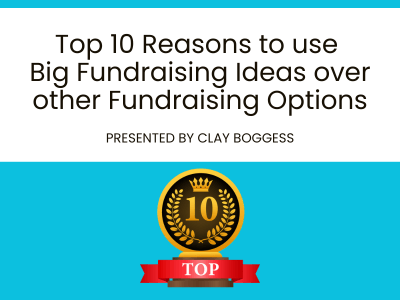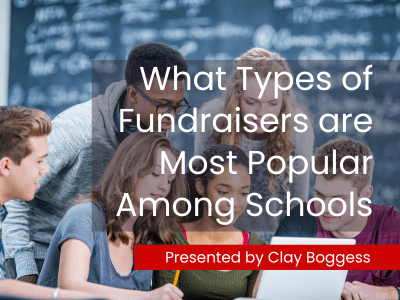
If your school plans a fundraiser in the United States, prizes are key in generating excitement and encouraging participation. Whether you’re raising money for new equipment, academic programs, or extracurricular activities, a great set of incentives can inspire students and parents to sell more fundraising items. The primary question is: Which prize approach will capture students' attention, keep them motivated, and yield the most significant results for your school?
Prize programs come in various forms—from no-cost privileges like “Line Leader for the Day” or pajama-wearing principals to higher-end parties and merchandise prizes. The right choice for your school may depend on your audience (elementary vs. high school), profit margin goals, and overall creativity. When done correctly, these incentives can significantly increase student participation and overall sales, eventually boosting funds raised for your school’s cause.
No-Cost Prizes: How They Drive Higher Sales
Prize Drawings: Keeping Enthusiasm High
The prize drawing is one of the most straightforward, appealing, no-cost fundraising tools. The concept is simple: each time a student sells a certain number of items—five is a standard benchmark—they fill out a coupon. The coupon is then dropped into a drawing box to win a free pass or special recognition. By holding frequent prize drawings during the fundraising period, you remind students that every coupon represents a chance to win something fun.
Periodic announcements of winners create buzz around the school, motivating students to keep selling. This excitement peaks because everyone wants to hear their name called out in front of peers. Even if a student doesn’t win immediately, the chance to keep turning in coupons for every few items sold encourages them to keep going.
Benefits of Prize Drawings:
- Low or zero cost to implement
- Builds ongoing momentum
- A fair opportunity for everyone to win
- Easy to incorporate into daily announcements
Reward Activities: Fun Ways to Motivate Sellers
Beyond random drawings, many school groups opt for reward activities that don’t cost much (or anything at all). Simple privileges such as:
- Line Leader for the Day
- Classroom Leader for the Day
- Free Dress Day or themed dress passes
These options serve as immediate incentives that excite students of all ages. As a more significant bonus, entire groups earn a pizza party or a DJ dance event if they hit specific collective sales goals. Often, you can find local businesses willing to donate food in exchange for a positive mention at the event. Alternatively, you can pay for simple party supplies with coupons that offset the cost—ensuring minimal impact on your budget.
Principal Participation: Adding Excitement to the Campaign
If you want to spark a genuine surge in sales, involve a school administrator. Students usually respect their principal but love seeing them do something out of the ordinary. Announce at your kickoff that the principal will do something unusual—spend a day on the roof, wear pajamas to school, or even color their hair—if the fundraising target is reached. This quirky challenge can motivate students, primarily if the principal consistently promotes the idea throughout the fundraising drive.
Investing in Better Prizes for Larger Returns
Balancing Profit Margin and Prize Quality
When planning a school fundraiser, the main question often revolves around cost: Is it better to invest in a premium prize program at a slightly lower profit percentage or stick with a more traditional, less expensive prize program for a higher profit margin?
Traditional prize programs typically require students to sell many items before reaching top-tier rewards, which excites them initially—who doesn’t want to dream about that big limo ride or top-seller prize?—but the reality is that only a tiny percentage of students reach those coveted levels. The majority end up with lower-level trinkets, which can reduce overall enthusiasm. The benefit is that these programs usually offer a higher profit margin for the school, but the downside is often fewer sales because fewer students remain engaged all the way through.
On the other hand, better quality prizes (for instance, wearable gear or event-based rewards) might lower the school’s percentage but often yield better overall sales. A lower rate of a higher gross can still mean more money in your school’s account at the end of the fundraiser.
Traditional vs. Distinct Incentives
Traditional incentive programs have been the go-to choice for elementary schools for many years. These programs rely heavily on a structured prize ladder: sell a small number of items to receive a small prize or sell many items for a bigger, often more coveted reward. While this approach has a proven track record, it sometimes fails to excite students tired of the same old items, and parents can be wary of cheap or flimsy prizes.
Meanwhile, high school students respond more positively to practical, higher-value items such as sportswear or cash rewards. Branded hoodies, T-shirts, or other apparel they can wear year-round tend to attract older students who may not be interested in novelty items. Some clubs—like band and cheerleading teams—often love cash prize programs because they’re straightforward: the student’s motivation is to sell enough to earn some quick money, and the sponsor avoids dealing with many tiny prizes.
Appealing High School Rewards
- Sportswear Prize Programs: Students who hit specific sales benchmarks receive track jackets, sweatshirts, or performance tees. These practical items can be worn to sporting events, pep rallies, or around campus.
- Cash Prize Programs: Groups appreciate the simplicity—once the final bills are paid, the sponsor receives a check from the fundraising company and distributes the student earnings accordingly.
Fresh Programs for Elementary Schools
An emerging trend involves substituting small, low-value items with a more entertaining collective reward. For example, a party or show becomes the prize for meeting a specific goal: “Sell 5 items, and you get admission to a fun event!” Students are often more intrigued by a group experience they can share with friends than a random trinket they may toss aside. These programs can raise overall participation because most kids can hit a modest sales number. As with any arrangement, schools must confirm they can meet the vendor’s minimum to secure the event with minimal additional costs.
Maximizing Sales with Prize Coupons
How Prize Coupons Motivate Participation
Prize coupons are a simple yet highly effective tool for fueling student sales throughout the fundraiser. Whenever a participant sells a set number of items—often five—they tear off a portion of their coupon sheet, fill it out, and return it for the chance to win a special privilege, a random prize drawing, or both. This incremental approach keeps the momentum alive. Every time they sell, they immediately see a small acknowledgment of their work.
Students are inclined to turn in coupons after they are earned because immediate recognition feels good. You can quickly heighten this feeling by reading out winners during daily announcements and awarding privileges.
Handling the Prize Coupons Effectively
You have two main approaches to managing these coupons:
- Empty the Drawing Box After Each Announcement: This method levels the playing field for everyone, ensuring that even someone who sold early in the fundraiser doesn’t accumulate an overpowering number of entries. Every daily or weekly drawing starts fresh.
- Keep the Coupons in the Box: By allowing coupons to pile up, students who continue to sell throughout the fundraising period increase their chances of winning, which can be a strong motivator for those who remain dedicated, but it may discourage new or late-start sellers if they feel they have less of a shot.
Addressing Bogus Coupon Submissions
A valid concern is that students might turn in coupons for items they haven’t sold. Combat this by clarifying that final prizes won during the fundraiser will only be awarded after verifying each student’s order form. Keep the names of selected winners on file, and once the fundraiser closes, cross-reference everything. If students' submissions don’t match the actual sales, they forfeit their claim. This method encourages honesty and ensures rewards for those who genuinely earned them.
Promoting Your Prize Program for Better Results
Spreading the Word Before the Fundraiser
Promotion shouldn’t start on the first day of product sales; it should begin a few days prior. Build anticipation by dropping hints during morning announcements or in school newsletters. Tease the idea that “something exciting” is coming, or briefly mention a big upcoming prize reveal. You can also send letters or emails to parents, letting them know what type of rewards their children could receive for participating. Parents are often just as excited about the possibility of memorable prizes, especially if they feel the fundraiser offers worthwhile returns for their families and the school.
Making the Most of Kickoff Meetings
Your official kickoff is critical. Whether it’s an entire assembly in the auditorium or a classroom-by-class introduction, this is your chance to show students exactly why they should care about your fundraiser. During the meeting:
- Build Suspense: Keep major prizes hidden under cloth or paper. Reveal them one by one as you explain the selling thresholds. Start small, climb the ladder, and crescendo with the top-tier or most entertaining prize.
- Let Enthusiasm Show: Whoever leads the kickoff—the sponsor, the principal, or a representative from the fundraising company—must display genuine excitement. If the students see your passion, they’ll be more apt to listen and try.
Keeping Prizes Top of Mind During the Sale
Fundraising programs usually run for a few weeks, but people’s attention spans are short—especially when students juggle homework, sports, and other activities. You can’t afford to mention the prizes at the kickoff and then hope everyone remembers. Keep the message alive by:
- Regular Announcements: Discuss current progress and remind students of the prizes daily. Congratulate specific classes or individuals who are achieving great results.
- Spur-of-the-Moment Prize Drawings: Incorporate random drawings that reward a small subset of students on the spot. This immediate gratification keeps excitement levels high.
Post-Sale Recognition: Showcasing Winners
The most significant missed opportunity in many fundraisers is the post-sale celebration. Don’t let the final distribution of prizes happen quietly. Instead, consider holding a short assembly or ceremony where you formally present significant rewards to the highest sellers. Recognize their hard work before their peers to create a lasting impression. Seeing classmates step on stage to claim prizes or hearing about their experiences—like riding in a limo or attending a pizza party—will linger in everyone’s memory, setting the stage for even better participation in your next fundraising campaign because students will remember that tangible rewards are on the line.
Turning Fun Incentives into Fundraising Success
Crafting a successful fundraiser in the USA requires more than just a good product to sell. You must fire up your students’ excitement to approach potential buyers, and that’s where your incentive plan truly shines. Whether you opt for no-cost privileges like “Free Dress Day” or decide to invest in a bigger reward such as a pep rally, a DJ dance party, or high-quality merchandise, matching the incentive to the student’s interests—and consistently promoting those incentives—can make all the difference.
Remember:
- No-cost prizes (like principal challenges or special passes) keep enthusiasm high without draining profits.
- Better Prizes (like appealing gear or event-based experiences) may slightly reduce your profit percentage, but the surge in total sales can more than compensate.
- Prize Coupons maintain ongoing motivation, especially with scheduled drawings and visible announcements.
- Effective Promotion of your incentives before, during, and after the sale fosters a more engaged student body that keeps pushing until you hit your goal.
Above all, never underestimate the power of recognition, especially from a principal or sponsor who can show genuine excitement. With the right mix of entertainment, challenge, and reward, you can encourage your students to go the extra mile—putting your fundraiser well on its way to surpassing expectations. By taking these strategies to heart, your school can raise funds effectively while bringing the entire community together through fun, memorable experiences.
Frequently Asked Questions (FAQs)
What are some free prize ideas for school fundraising?
You can offer privileges like “Line Leader for the Day,” “Classroom Leader,” or “Free Dress Day” passes. These cost nothing but can still inspire students to sell.
How do I encourage students who are only interested in high-value prizes?
Consider reward tiers. For higher sellers, offer both smaller perks (like privilege passes) and bigger experiences (like a DJ dance or pizza party). This way, everyone has a reason to participate.
Should we invest in pricier prizes or stick to free rewards?
It depends on your group’s goals. Pricier prizes might lower your profit percentage, but they often attract more sellers, increasing total revenue. Free rewards keep expenses low, which can be a good fit for some schools.
How do we prevent students from submitting fake prize coupons?
Inform them that any coupon submissions will be verified against final sales. If the numbers don’t match, the reward is forfeited. This policy promotes honest participation.
How can we keep the momentum going throughout the entire fundraiser?
Make frequent announcements, host periodic prize drawings, and continuously remind students of the rewards, ensuring the fundraiser remains fresh in their minds.
How do high school fundraising incentives differ from elementary rewards?
High school students often prefer cash or wearable merchandise (like T-shirts or sweatshirts), whereas younger students may respond better to parties, events, or simple daily privileges.
How do we promote our incentives effectively?
Start with early teasers a few days before the sale, follow up with an engaging kickoff, and keep reminding students of prizes throughout the fundraiser. Finally, host a celebratory event or assembly to recognize top sellers.
Author Bio
Clay Boggess has been designing fundraising programs for schools and various nonprofit organizations throughout the US since 1999. He’s helped administrators, teachers, and outside support entities such as PTAs and PTOs raise millions of dollars. Clay is an owner and partner at Big Fundraising Ideas.



